(this post was co-written with Matt Stempeck)
Is Citizen Media many movements, or one movement, and how can we work together?
Moderating this discussion is Ethan Zuckerman, co-founder of Global Voices. Mong Palatino (@mongster, website) is an activist, youth leader, member of the Congress of the Philippines, and Global Voices author, where he has been blogging since 2004. Amira Al Hussaini is a journalist and blogger from Bahrain, and the Global Voices regional editor for the Middle East and North Africa Matisse Bustos Hawkes is the communications manager for WITNESS, which uses video to open the eyes of the world to human rights violations. Faisal Kapadia is a Pakistani blogger and journalist who has coordinated disaster relief and campaigns for internet freedom in Pakistan.
Gregory Shvedov was stuck in the Istanbul airport and wasn't able to join the panel. He is a Russian human rights activist and founder of Caucasian Knot, an independent news site which focuses on human rights and issues of interest in the Caucausus region.
Ethan starts out by telling the story of the very first Global Voices summit. Ethan and Rebecca brought together some of the very earliest bloggers from around the world, trying to figure out how to use their ability to write online and share it with the rest of the world. They brought together 40 people from around the world and said, “Do we have anything in common?” and the answer was “Yes.” They all felt the Internet needed to be a space for free speech, and shared a desire to know what people in other places were thinking and talking about. They asked each other: is this a movement? The answer then was “Of course.” But now, 8 years later, citizen media is part of everyone's life. This isn't a strange thing that bloggers do; it's now part of mainstream media. Citizen media may also not be a single global movement; it may be lots of different local movements, and there is an open question about whether we have more in common or more that's different.
Mong takes the stage to talk about Citizen Media in Southeast Asia. The region is famous for Singapore, Bangkok, and Kuala Lumpur, or places like Bali. Mong tells us about a series of social media campaigns throughout Southeast Asia.
#bersih means “clean” in Malay. It's an electoral reform movement in Malaysia. Its demands are simple, but the government violently dispersed the crowd, and the movement reached a wider audience through social media and the #bersih hashtag. Using that hashtag, tens of thousands of people organized on the streets.
Mong tells us about Urban Voice Cambodia, a project to map land evictions, which was followed up by Avatar-themed protests. He tells us about the Myanmar “power” protest, where people posted images to their Facebook profile pictures, which helped spread the protest to many urban centers.
People in Southeast Asia also use social media to respond to disasters. Mong jokes that people eat tsunamis and volcanoes for breakfast. In a region where there is always a disaster, netizens use social media tools to talk about these disasters. Later on, these issues become political, as in the case of #thaiflood. Thai citizens initially used this hashtag to report information and flood stories. Over time, the hashtag shifted to complaints about how the government and mainstream media handled the flood response.
Mong tells us about the Mass Planking protest in the Philippines, after the government banned planking. In Singapore, the “Love Curry” campaign expressed solidarity withIndian immigrants.
He talks about Lese Majeste laws, laws in Thailand which led to the arrest of Chiranuch Premchaiporn and political organising around the hashtag #freejiew.
Mong tells us that in Southeast Asia, people are generally free:
- to criticize another country
- to embarrass yourself
- to worship entertainment stars
- to praise the royal family
- to cheer, jeer during sport events
- to promote charities
Mong concludes with a set of observations on citizen media:
- The region has poor IT infrastructure, but that hasn't stopped the rise of social media initiatives and campaigns
- Censorship starts with the high cost of Internet
- We should mix online and offline. There is an #occupySingapore, but no one came
- More and more politicians are promoting transparency and social media, but it's not enough to have online presence. Governments could distract citizens by publishing trivial information
Next up is is Matisse Bustos Hawkes of WITNESS. Ethan introduces the history of WITNESS, which was founded by Peter Gabriel 20 years ago when he realised that video was going to transform human rights. Now WITNESS is watching their own field transformed by the ease with which people can make video.
Matisse talks to us about how video is changing human rights. The breadth of people making video has expanded dramatically in the last 20 years. We have accidental witnesses, people at protests, people with training and equipment to cover events, perpetrators who share video for intimidation or whose videos get leaked, and mainstream media outlets who are increasingly showing and screening citizen media.
Citizen media is being shared and shown in many new places as well. The International Criminal Court is using citizen video as evidence; communities are producing video to convince politicians of their interests, people are sharing video on social media, and communities are showing street screenings of issues that affect their communities.
Now that we can shoot and share video instantaneously, how can people control the information they're sharing about themselves and the people they film. She tells the story of a woman who tells her story, and whose face is obscured in the video to protect her identity. She shows efforts by the Iranian government to crowdsource the identity of protesters. Wael Abbas is using the livestream platform Bamboozler, which shares the location of livestreams. His friends can track where he is; so can the police.
Matisse shows us ObscuraCam (download the app at Google Play), a partnership with The Guardian Project, which automatically identifies and obscures any faces it detects in the photos you take, and strips out metadata which might compromise your identity. ObscuraCam is also great for taking photos of weekend clubbing if you don't want your boss to notice. InformerCam is technology which encrypts video metadata to help verify the source of a video, but only verifies for trusted sources.
Shooting and uploading video is only the first step. WITNESS has just launched a YouTube Human Rights channel. Together with Storyful, WITNESS is creating verified YouTube playlists collected around common issues and places. Matisse asks people to suggest issues and videos they should highlight on this platform.
How can we share content both safely and with authenticity? Quite often, important videos lack titles and context. As a result, they lack the context viewers seek. Other times, these videos are taken down from YouTube. Matisse offers to talk to summit participants about how they can share their videos safely and effectively.
Next, Ethan introduces Bahraini journalist Amira Al Hussaini as “the heart and soul of Global Voices.”
Over the past 18 months, we have all been following events in the Arab world. We now see Arabs as real people with real hopes and dreams, who aspire to many of the things which many people take for granted: the right to speak, express yourself, and demand things from the state which are written in the universal charter of human rights. When Arabs read “everyone has the right to” they laugh; is it even safe to read them aloud?
In December 2010, people started talking to each other online, there were a few fuzzy photos, and then protests, and then a Facebook revolution. And then Ben Ali left. Everyone was shocked. Amira didn't know what happened; she broke down and cried. For the first time in her life, she saw an Arab ruler, a pharaoh, flee. It's a moment which she will remember forever.
And then on the 25th of January, Amira's Egyptian friends looked outside his window and said, “there's nothing happening on the streets.” But then the revolution started with a Facebook event and a viral video. For 18 days, everyone was glued to the TV watching what was happening. Al Jazeera played a huge role– nobody can deny it. But everybody got onto social media. People on the ground posted media to social media networks, where it was watched by Egyptians and
In Bahrain, the government filmed protesters to discover who those protesters were. While we need to document things, make it credible and real, but we also need to protect people. All the same, people know the risks. Before social media, there were also spies watching speeches. Governments don't need hard evidence to incriminate you. They just need to feel that you could harbour any dissident thoughts in your head; they will first arrest you and they will make up evidence.
She concludes by asking us to salute the brave people who risk their lives to film and document atrocities happening everywhere. Many of those people saw someone gunned down for the first time– and they filmed them. Viewers who saw those videos broke down crying. Let's think about the repercussions for citizen journalists filming things on the ground and figure out how to help them get their word across.
Amira tells us that we are connected when there's a big thing happening, and we're not connected when we're focused on our own thing. Egypt is getting a lot of attention because the Egyptian bloggers are well connected. She asks us to support people who are screaming out in their strife and not getting enough attention.
Faisal Kapadia tells us about the blogosphere in Pakistan. When he started blogging, people initially thought that they were people with too much time. And then the mainstream media became interested and made many of them column writers in the mainstream news.
The Pakistan floods in 2010 came at a time when more people were getting online: 6 million Pakistanis on Facebook and 3 million on Twitter. When the flood came, Faisal and his friends used social media to raise money and take resources to help people in the central region. In total, they raised $256,000 in several months. They started SARelief, a general platform for disaster relief. To encourage transparency, they checked in to GPS coordinates to illustrate where they were and shared videos of their projects. In their first seven missions, they were able to give 380,000 [correction: 38,000] people with food hampers, building hundreds of tents for 2,800 people, clothes for 500 families, and thousands of bottles of water.
They would roll into town saying they were coming, and someone would say “do you need a warehouse? Do you need a place to stay the night?” In 2011, floods hit again. At this time, a lot of aid organisations exhausted their donations, and people weren't ready to donate. Through social media, they were able to raise $90k in a month again, feeding 200,000 [correction: 2,000] people a day for 2 months and building 4 medical camps.
In 2012, now that people realise the potential of social media, they started to reach out on broadcast media. In February, they organised to shut down the Maya Khan show. In March, the Pakistani government used a Telco R&D fund to advertise that they wanted to buy 10 million dollars of equipment to create a Great Firewall of Pakistan. Using international contacts, they were able to put pressure on the government to back off. Following that, they have now gone to court against the government and received a stay order from the judiciary, the first of its kind anywhere, which prevents the government from shutting down websites without going through the judicial process. They now have to give sites notice and give them a chance to redress. Faisal tells us about a recently shut down website: hometownshoes.com. Curious about why this site was shutdown, they discovered that all websites with the name “shoes” were shut down.
Discussion:
Ethan: if there's a common theme in these accounts, it's that we're discovering the power of social media to bring movements together. He asks Mong if people are supporting movements across regions.
Mong: South East Asia has strong Internet communities in Indonesia and Malaysia. Most of the netizens are writing in their own language. At Global Voices, we highlight many of these stories. In regions, netizens are maximising social media, but not necessarily for political purposes. People's initial instinct is to write about environmental issues. But they can't help but talk about politics. Tweeting about the environment can lead people to question political issues. If there is a connection between offline and online issues, a movement can spread.
Ethan asks Amira about the way that Arab countries took inspiration from each other. Can the energy of the Arab Spring spread through the region, particularly to Sudan?
Amira: online, people learn from each other. As people learn what to do and what not to do, governments learn how to repress. What happened in Egypt and Tunisia will continue to inspire the region and the world. We should also talk about the spread of technology. While the majority of people have access to the Internet in Egypt. Yemen has low Internet penetration, but it didn't stop activists from showing us what was happening on the street during moments of carnage. During Libya, it was very difficult for us to get voices of people off the ground.
Ethan: Remember that early on you saw a nation like Gabon, far from the Arab world, try to pick up the energy of the Arab Spring, but held back by how few people on the ground had access to media. We see this in Mali, where it's hard to keep an eye on it. Matisse, what can citizen media learn from the human rights movement? You have 20 years figuring out how to document things that are happening in places where few people have access to media technology?
Matisse: We have experience in places like Burma and Myanmar, or the (Eastern?) Democratic Republic of Congo. People often use flip cameras and other simple technologies to share media in a hand-to-hand way. These places aren't going to be connceted by WIFI or wired networks anytime soon. But people can still share media with jump drives, CDs, and DVDs. Communities still come together and transmit information. When taking media for evidentiary purposes later on, it's important to be attentive to the safety of people documenting and the film they take. Matisse points us to advocacy guides by WITNESS. In Syria, people are putting evidence on jump drives or printing them out and sending them to WITNESS via the diaspora.
Ethan: Perhaps we should be thinking about how we as digital natives can share those resources online. Faisal, you told me a story about how people move from discussion of natural disasters to media disasters to organising politically. But the main issue you discussed seems to be that the Internet is at threat. Is this an issue that might bring us all together as a citizen media movement?
Faisal: people in Pakistan recognise the importance of the Internet, but they just woke up to it a few years ago. The Internet is severely restricted in many parts of the world. Although many of us are fighting for free speech online, governments are also learning from each other. Unless we all take up the fight together, the Internet in five years will not look like it is today. Future generations might see this as the golden age of the Internet.


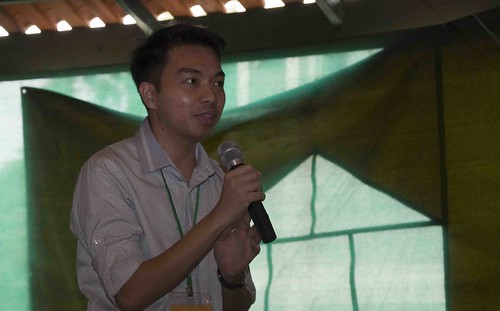
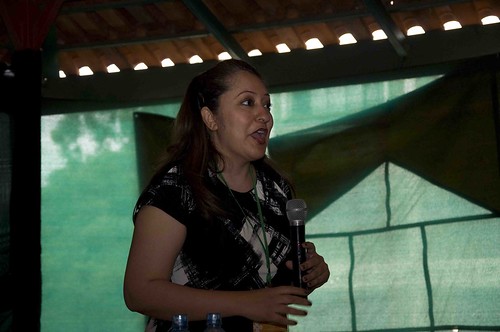

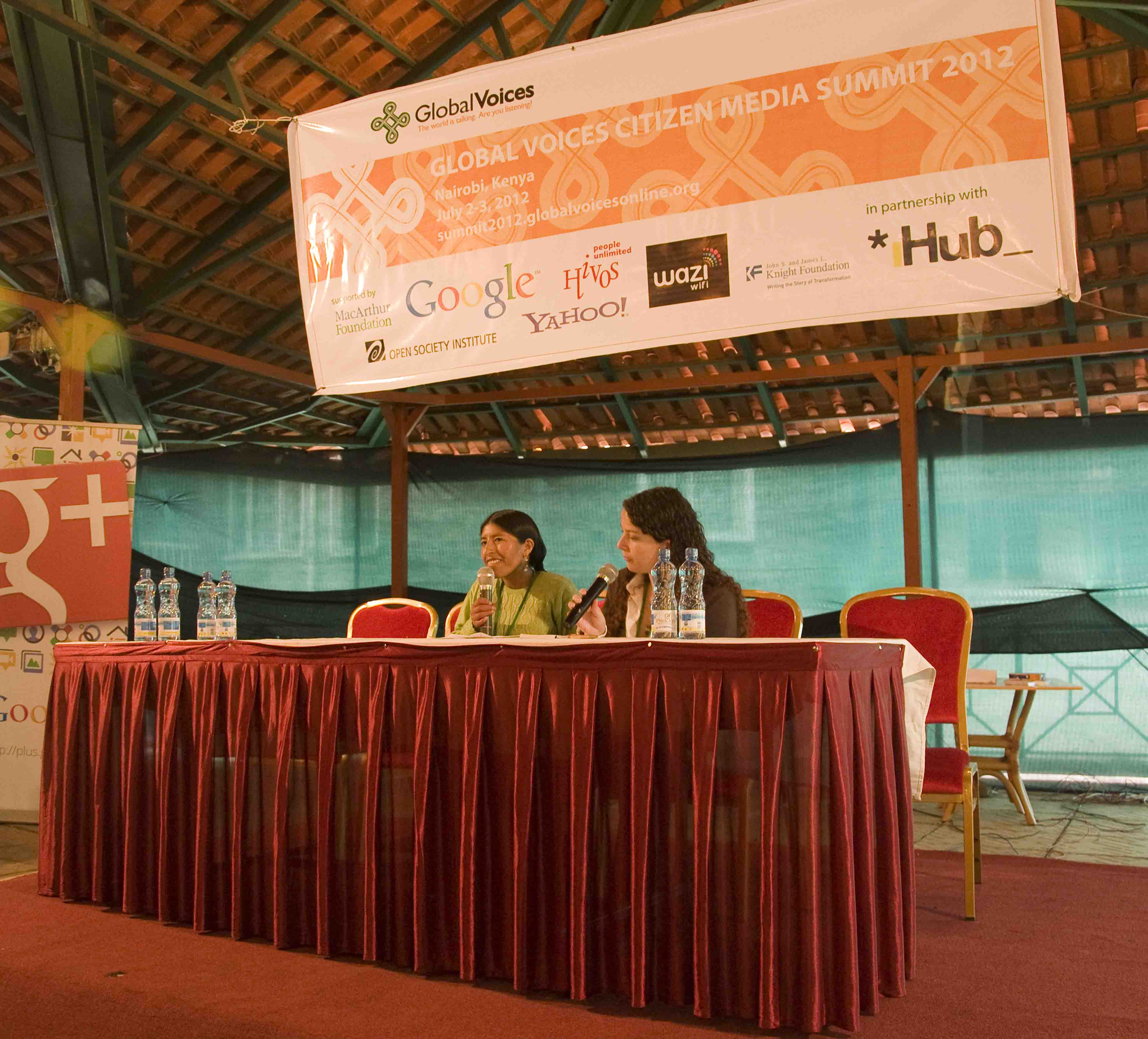
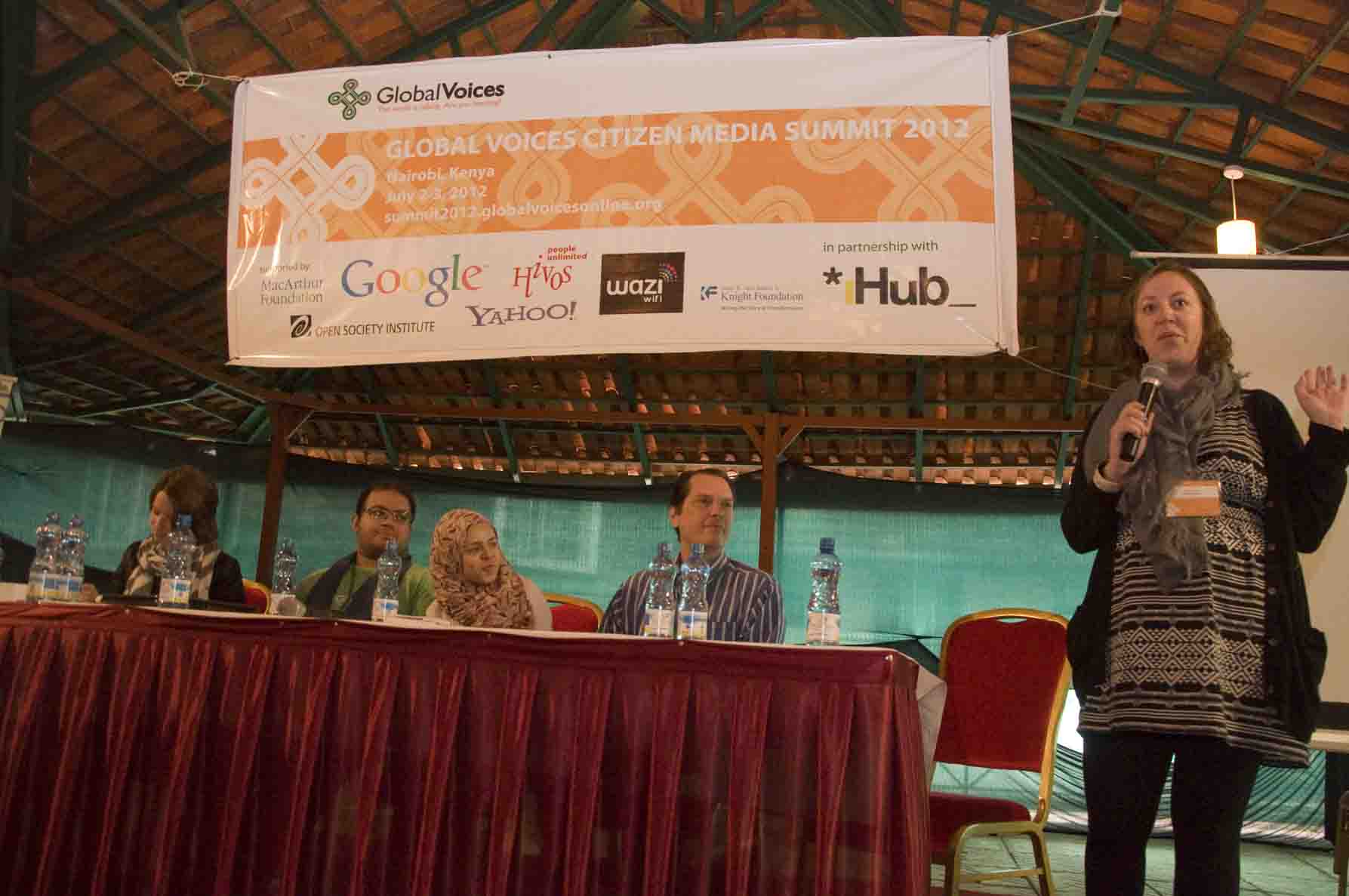
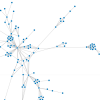







4 comments